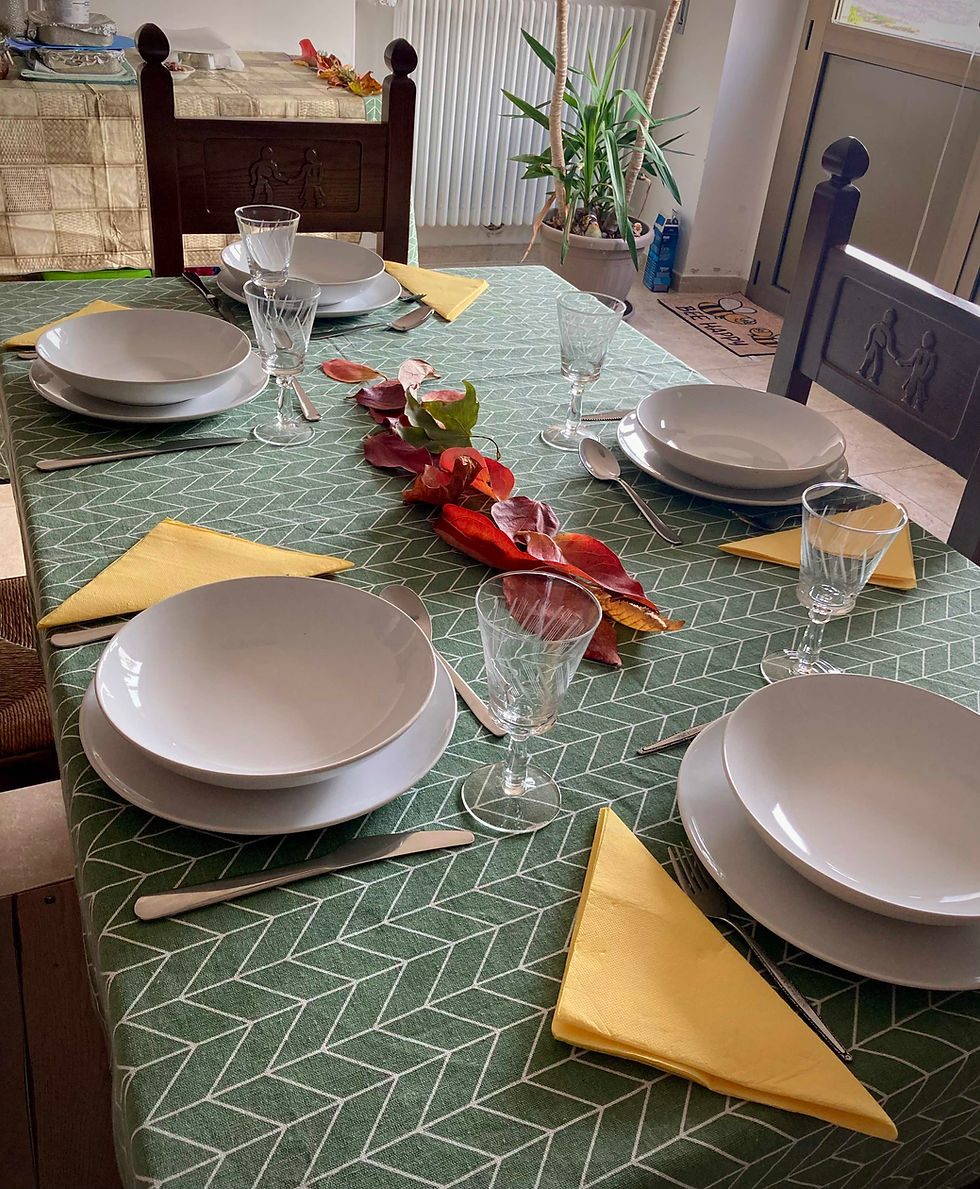Medicine Woman: Praise for Hibiscus
- Diana Scalia
- Apr 10, 2024
- 3 min read
Updated: Jun 13, 2024

A couple weeks ago, I refined one of my last cookbook recipes, for Jamaica Quinoa. In my book, this gorgeous, magenta, hibiscus-infused grain is the bed for grilled fish ... and my humble rendition of an extraordinary plate that I had in Mexico years ago.
As your Medicine Woman ;), I am delighted to share some intel about hibiscus, this very special deep pink-red flower, that graces my table and glass from time to time. Agua de Jamaica is the agua fresca – fresh water also simply known as hibiscus tea – that graces tables in Mexico and throughout the Caribbean. Stay with me here ~ let me explain why that is, then I’ll share recipes.
It is said that Hibiscus has been cultivated for about 6,000 years. It possibly originated in Northern Africa, and it is now a darling in the world of tropics and subtropics.

Hibiscus is a member of the mallow family, and has what is known as demulcent quality. This means that it coats mucus membranes, including those that can be easily parched during arid climates, for instance. It is also a plant with cooling and moistening energetics. These combined properties explain why Hibiscus tea is such a refreshing and nourishing beverage, and so popular in regions like Mexico and the Caribbean.
Hibiscus has gained popularity in western cultures due to its plant medicine benefits for lowering blood pressure, improving kidney function, modulating inflammation, decreasing stress and even cholesterol levels. Certain heightened doses over longer periods have offered benefits to cardiovascular health as well.
It is also suggested that Hibiscus may have beneficial effects against cancer. For excellent information on how much Hibiscus loves us, hop over to the pages of my favorite Herbalist, Rosalee de la Floret.
In my kitchen, I love keeping Hibiscus handy for making tea, in stunning magenta! When the tea is sweetened either with sugar or honey, it makes a splendid refreshing beverage that I think is sublime, when stirred into sparkling mineral water.
The sweetened or unsweetened tea may also be the cooking liquid for quinoa, as mentioned at the top of this story and seen in the lead foto. Jamaica quinoa may be enjoyed as a warm or cold cereal, as a side for fish or other proteins, and ... added to pancake or waffle batter. This is one of my very favorite ways to enjoy this quirky specialty!
Find my recipes here for making Hibiscus-infused tea, and then for the quinoa. BonApp! (I just learned that they say this in France!)
For you and yours, let these both please, be a source of good food, good health, and good fun!
Hibiscus Tea (Agua de Jamaica)
1 cup dried hibiscus flowers
2 cups water (ideally distilled or spring water)
2-3 Tbs sugar (optional)
Place Hibiscus flowers and water in medium saucepan. Heat just until hot (do not boil) over medium heat, then reduce heat to very low flame; cover saucepan. Simmer for 22 minutes.
Strain with fine mesh strainer over bowl to reserve hot liquid. If adding sugar, return liquid to clean saucepan. Over low flame, stir in sugar until it dissolves; remove from heat. (Discard or compost Hibiscus solids.) Allow to cool if enjoying as tea. Serve chilled over ice and/or mineral water for a refreshing beverage. Yields about 2 cups liquid; recipe may be multiplied in direct proportions.
Jamaica Quinoa
1/2 cup quinoa (white, red, or mixed is fine!)
1 cup Hibiscus infusion
Rinse quinoa in fine mesh strainer for about 60 seconds. Place rinsed quinoa in medium saucepan and add 1 cup Hibiscus liquid.
Cook over medium-high flame until boiling. Reduce heat to low flame and cover saucepan. Allow to cook for 17-18 minutes, until quinoa pearls are soft and tender. Strain cooked quinoa from any extra liquid; reserve liquid for drinking later, or discard. Allow quinoa to cool slightly before eating or storing. (Warm or chilled quinoa may be stirred into pancake/waffle batter.)
Yields about 2 cups.





Comments